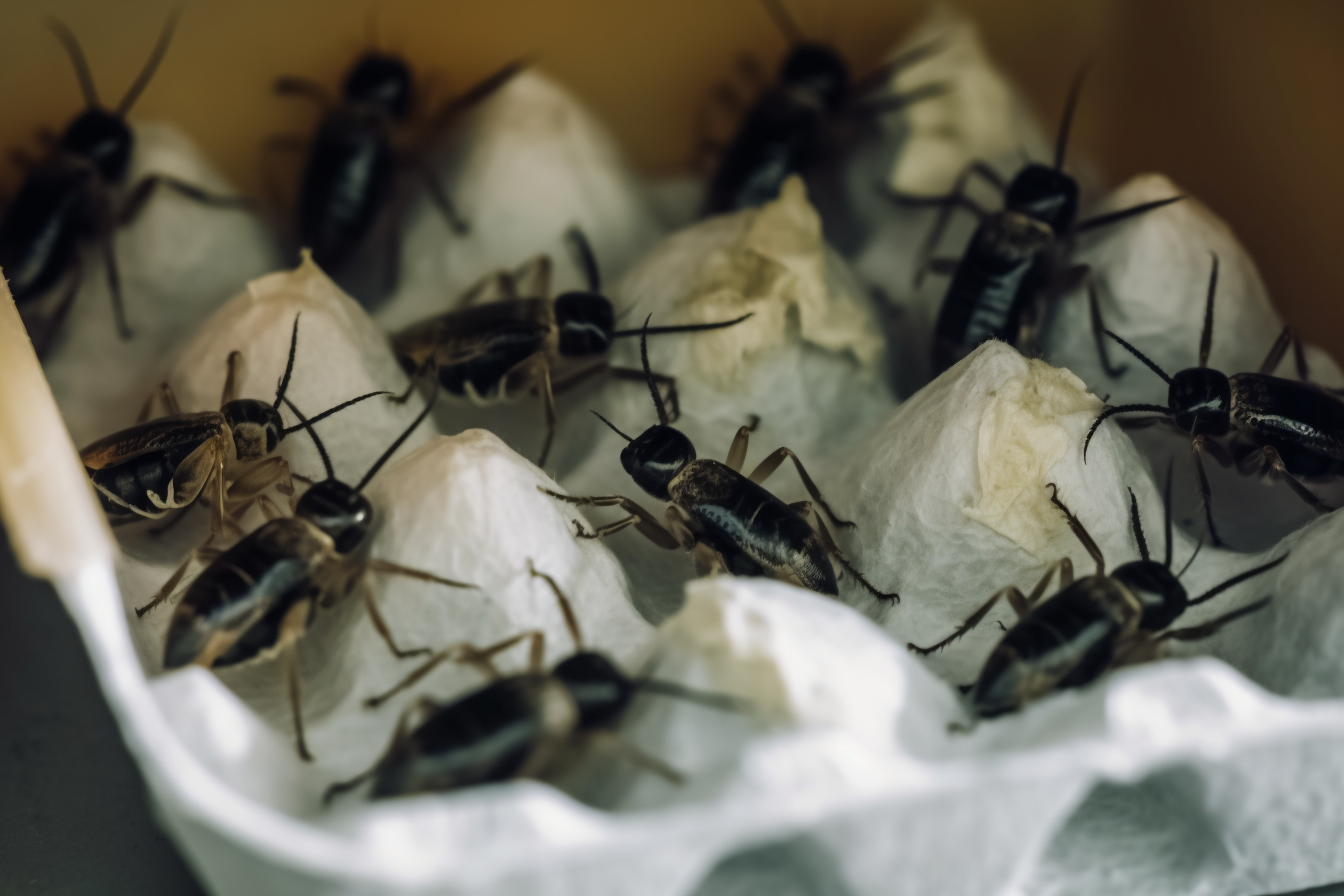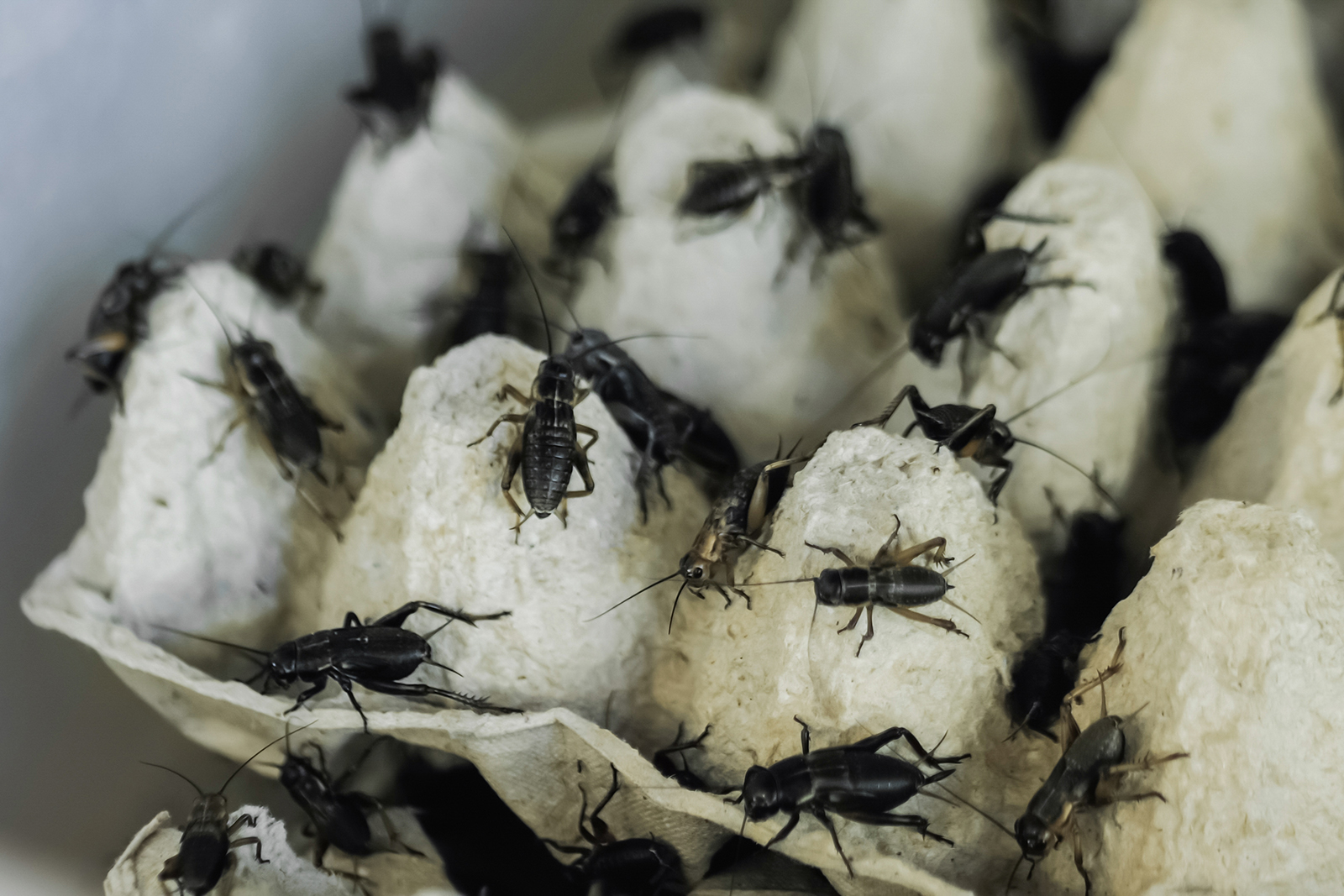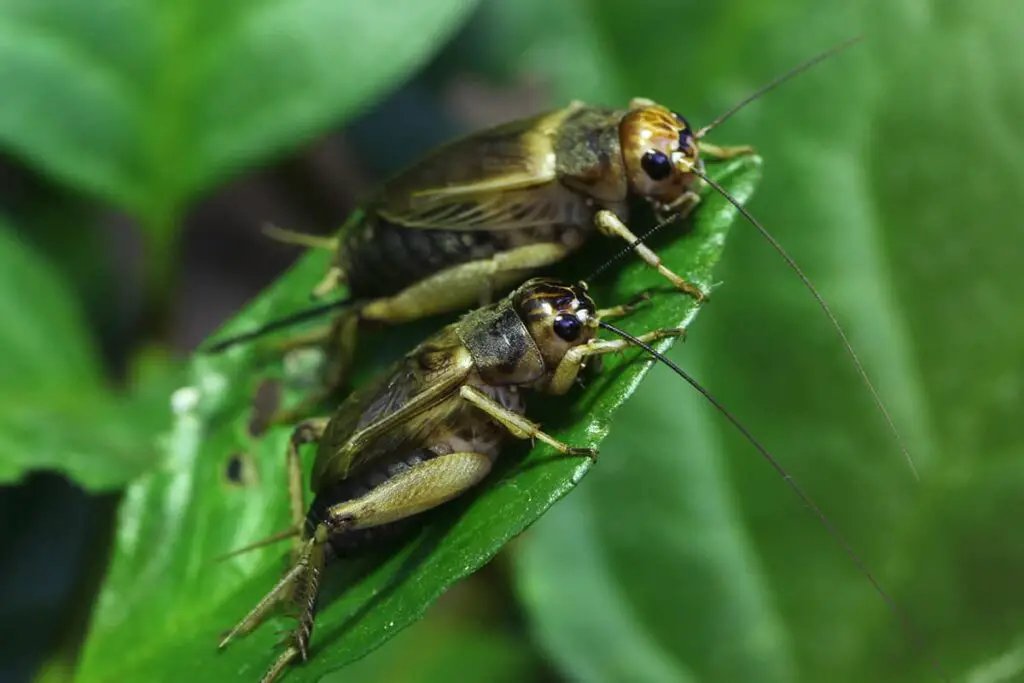
Crickets are fascinating insects that are often used as pet food or for fishing bait. As the owner of a rather large green tree frog I’ve always been curious about how to keep my feeder crickets alive, and one thing I noticed is that they always seem to come in egg cartons. This piqued my curiosity, and here are some things I discovered.
Egg cartons serve multiple purposes for crickets. These practical, readily available items offer an ideal environment for crickets to thrive, providing additional surface area for them to roam, hide, find shade, and lay their eggs. Furthermore, crickets love to eat paper products, making egg cartons not only a source of shelter but also a food source.
Using egg cartons in cricket habitats is a simple and effective way to ensure their well-being while also keeping them contained for use as pet food or bait. The added benefits of egg cartons, such as their low cost and accessibility, make them a convenient choice for me and many other hobbyists who care for these intriguing creatures.
Crickets and Their Natural Habitat
Crickets can live in numerous environments such as fields, meadows, forests, grasslands, marshes, swamps, trees, bushes, caves, beaches, and even underground (Sciencing).
Ideal Living Conditions
Crickets tend to lay their eggs in moist areas but cannot live in overly moist areas for extended periods as it could lead to fungal growth on their bodies. This is why they prefer habitats with balanced moisture levels, such as grasslands, forests, and swamps. Since they mostly feed on vegetables and grain products, they tend to thrive in habitats with abundant plant life and seeds (Go Pests).
Common Hiding Places
In my research, egg cartons are popular hiding spots for crickets in captive environments source. In the wild, crickets often seek shelter in roadside vegetation, gardens, and various other locations that provide cover from predators. They will usually hide during the day and become active at night to search for food and mates.
Egg cartons provide crickets with the ideal structure to mimic their preferred natural hiding places while providing the right balance of moisture and protection from predators.
Why Crickets Love Egg Cartons
As someone who is experienced with crickets, I can attest to their affinity for egg cartons. It’s no secret that crickets seem to love making themselves at home in these simple, yet versatile structures. Let’s dive a bit deeper into the reasons behind this preference by exploring three key aspects: Texture and Composition, Protection and Security, and Temperature Regulation.
Texture and Composition
The texture and composition of egg cartons make them ideal for crickets. These insects love materials like paper and cardboard, both of which are commonly used in the production of egg cartons. By eating the cartons, crickets can create comfortable spaces, and females can lay their eggs for successful hatching. The paper-like quality of egg cartons is more than a meal for crickets; it also offers efficient space for laying and hatching eggs, making these cartons extremely practical.
Protection and Security
Protection and security are vital for any living creature, and crickets are no exception. The very nature of egg cartons – their compartmentalized design – offers crickets ample space for hiding and nesting, which reduces aggressive behavior and possible cannibalism among them. The additional surface area provided by the cartons allows for crickets to better coexist and share their living quarters peacefully.
Temperature Regulation
Lastly, temperature regulation is essential for crickets, particularly when it comes to laying and hatching their eggs. As mentioned in Crickets Mode, eggs require a specific temperature range of at least 80°F (27°C) in order to hatch properly. Egg cartons help regulate temperature by providing insulation, thanks to the paper and cardboard materials. This makes for a more stable and conducive environment for these delicate processes to occur successfully.
In essence, egg cartons have become a go-to resource for accommodating crickets, providing them with an environment in which they can thrive. By understanding the features that drive their preference for these seemingly humble cartons, we can better care for and manage these fascinating creatures in our own habitats.
Breeding Crickets in Captivity
I’ve had some success in breeding crickets using egg cartons. In this section I’d like to discuss the benefits of using egg cartons, creating an artificial habitat, and sharing some maintenance tips for successfully breeding crickets.

Benefits of Egg Cartons
There are several advantages to using egg cartons for breeding crickets. One major reason is that egg cartons provide much-needed surface area, allowing crickets to climb and hide, reducing stress and cannibalism behaviors. The cartons are also made from natural, biodegradable materials that don’t harm the crickets or the environment. Furthermore, Cricket King also points out that using egg cartons promotes better ventilation in the enclosure, keeping the crickets healthier.
Creating an Artificial Habitat
When constructing an artificial habitat for breeding crickets, I found it essential to provide the right conditions. To start, I select a plastic or glass container that is large enough to house the number of crickets I plan to breed. I then place a heat source, such as a heat mat, near the enclosure to maintain the desired temperature of 80°F – 90°F for growing crickets. This is outlined in a great step-by-step guide from wikiHow.
Next, I add torn-up egg cartons, creating multiple layers of hiding spots for the crickets. Providing an additional hiding space is also a good idea by using cardboard rolls, such as paper towel rolls. A separate, humid laying bin is essential, as crickets only start breeding in humid conditions. An ideal laying bin can be a small 5 cm tall plastic container filled with damp substrate.
Maintenance Tips
In order to maintain a healthy environment for breeding crickets, cleanliness is crucial. I remove dead crickets, waste, and other debris weekly. According to the same wikiHow article, dead crickets release toxins that may harm live crickets. Additionally, I provide the crickets with fresh food and water by using a shallow dish or specially designed cricket waterer to prevent drowning. I am also cautious of using any chemical cleaners, which can be harmful to my crickets.
Taking care of crickets may require some time and effort, but with these tips, breeding crickets can be a rewarding and enjoyable experience for both insect enthusiasts and their pets.
Environmental Impact and Sustainability
Recycling Egg Cartons
One of the benefits of using egg cartons in cricket habitats is that they are effectively recycled. By reusing these cartons, I am contributing to reducing the amount of waste that ends up in landfills. According to Pete & Gerry’s notes on sustainability, egg carton manufacturers implement sustainability initiatives, such as using earth-friendly materials and practices that conserve resources in their production process. This makes egg cartons a relatively environmentally friendly choice for housing crickets.
Furthermore, using discarded egg cartons in cricket habitats can help save production resources and energy. This is because the resources and energy that would have been used to manufacture other cricket habitat accessories are saved by reusing the egg cartons. As a result, the environmental footprint of my cricket habitat is reduced.
Alternatives to Egg Cartons
Although egg cartons are a sustainable choice for cricket habitats, it is worth exploring other alternatives. Some cricket keepers opt for more natural options to provide shelter to crickets, such as:
- Leaves
- Chunks of bark
- Coconut shells
- Cork bark
It’s worth noting that these natural materials are also eco-friendly and renewable. They can help recreate a more natural environment for the crickets and minimize the reliance on manufactured goods. I encourage fellow cricket enthusiasts to experiment with more natural alternatives to further reduce the environmental impact of their cricket habitats.
Conclusion
Crickets are fond of egg cartons for various reasons. First of all, egg cartons provide an excellent shelter for these insects, ensuring they have a safe and comfortable environment to thrive in. The egg carton’s structure gives crickets more room and prevents them from feeling cramped, thus reducing their tendency to engage in cannibalistic behaviors.
In addition, egg cartons also contribute to an organized cricket habitat. With their unique design, these small structures enable crickets to live in separate spaces, resembling a “high-rise” setup as described within this HowStuffWorks article. This not only keeps the crickets comfortable but also makes managing the insect population much easier for those raising them.
One important factor to keep in mind is that any egg cartons used in a cricket enclosure should be made of cardboard, not styrofoam. Cardboard provides a safe source of fiber for crickets to nibble on without causing any harm, whereas styrofoam can be harmful if ingested.
Crickets like egg cartons due to the benefits of shelter, space, organization, and safe material for consumption. Emphasizing the importance of egg cartons in a cricket habitat reveals how essential these seemingly basic items are for keeping crickets happy and healthy overall.
Driven by a passion for those tiny creatures that rule our world, we at Bug Domain strive to be your go-to resource for information on insects.



